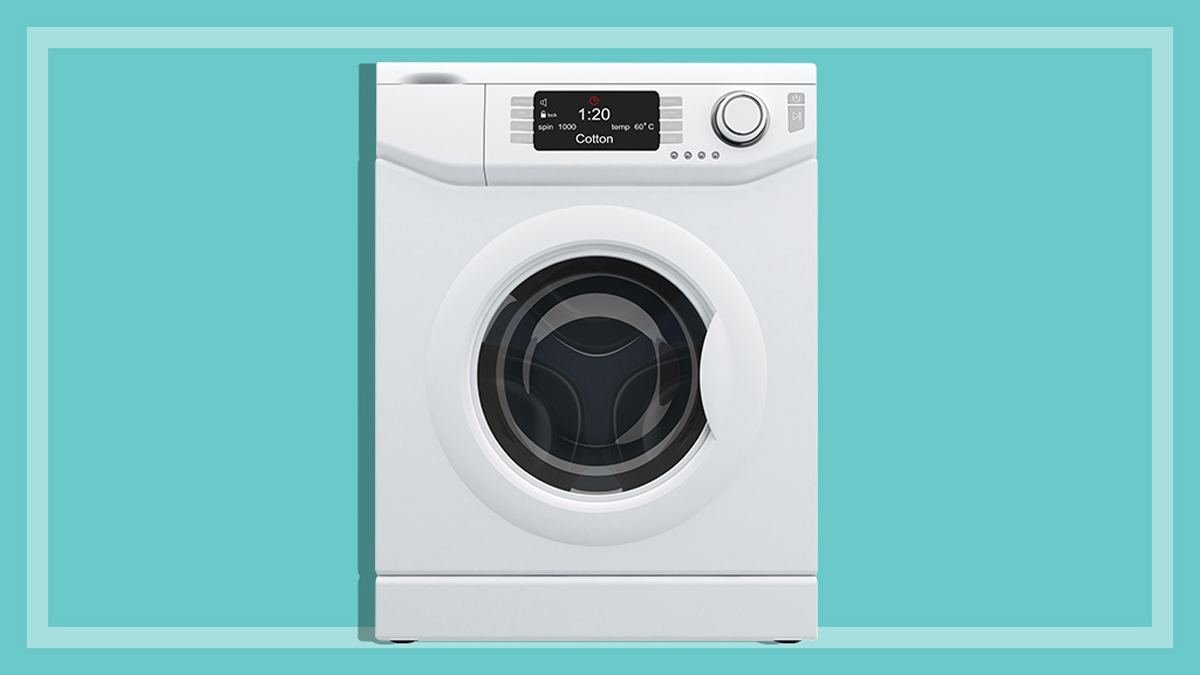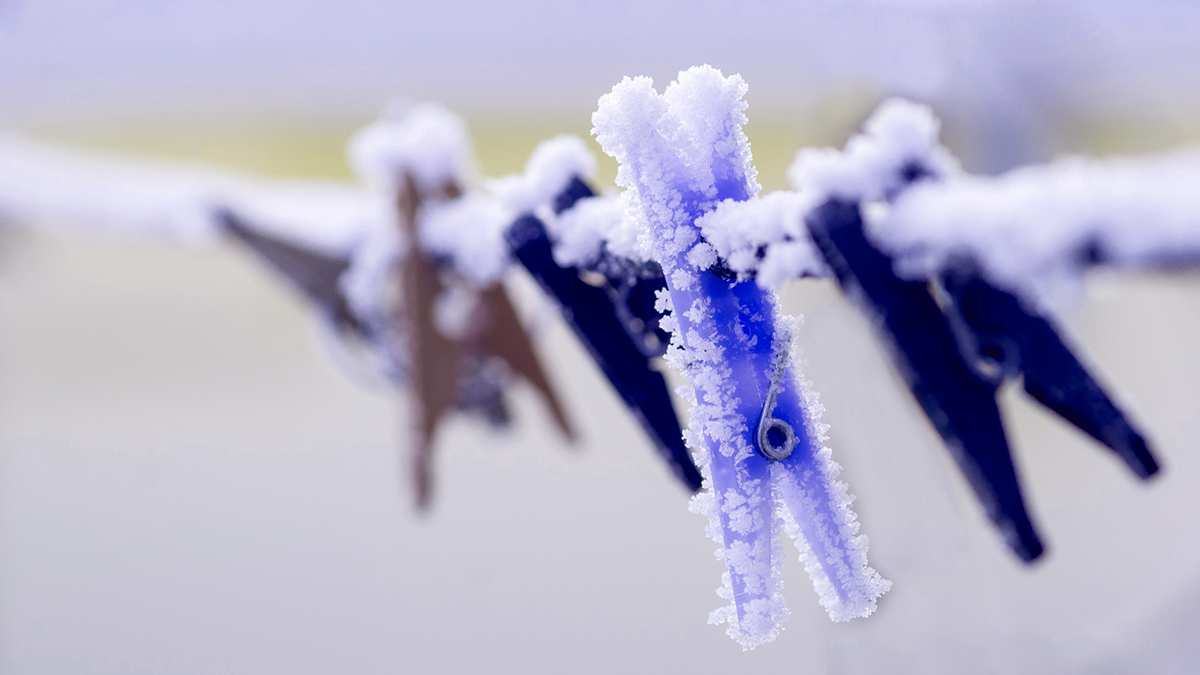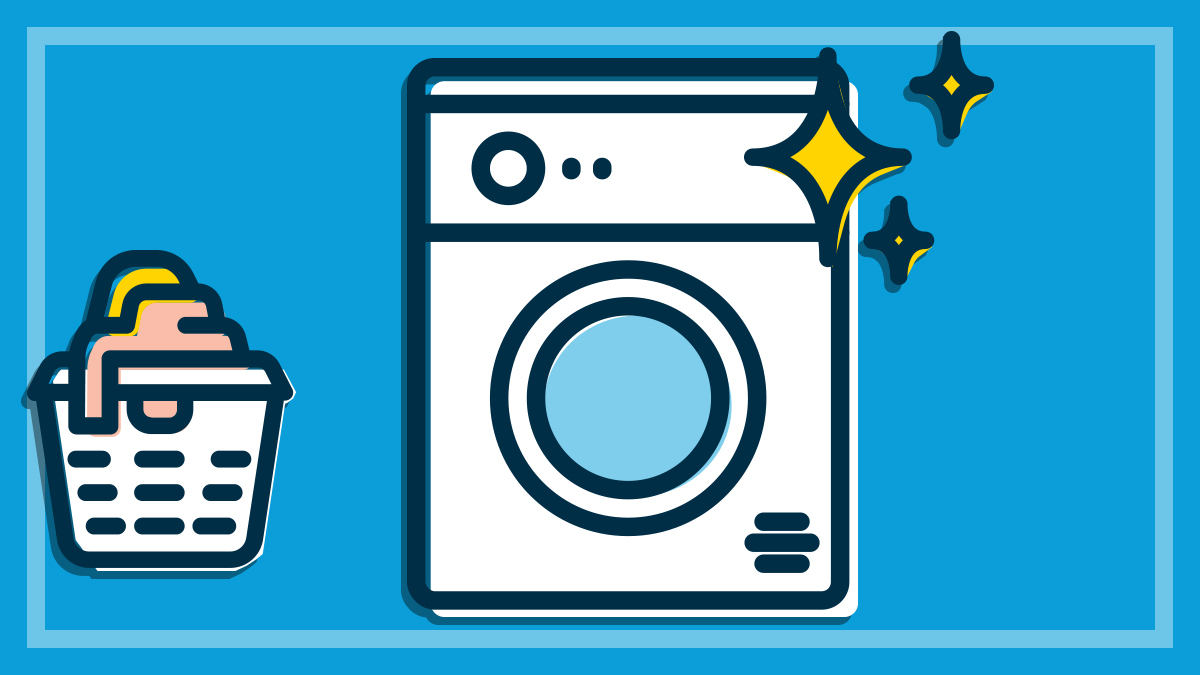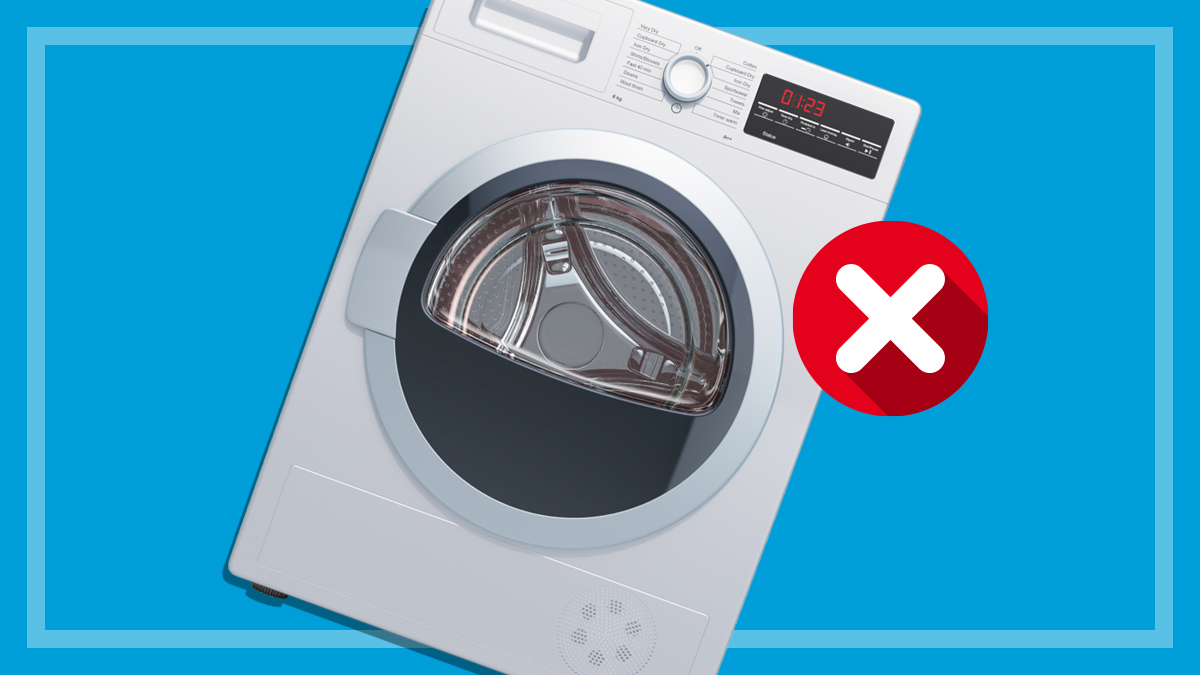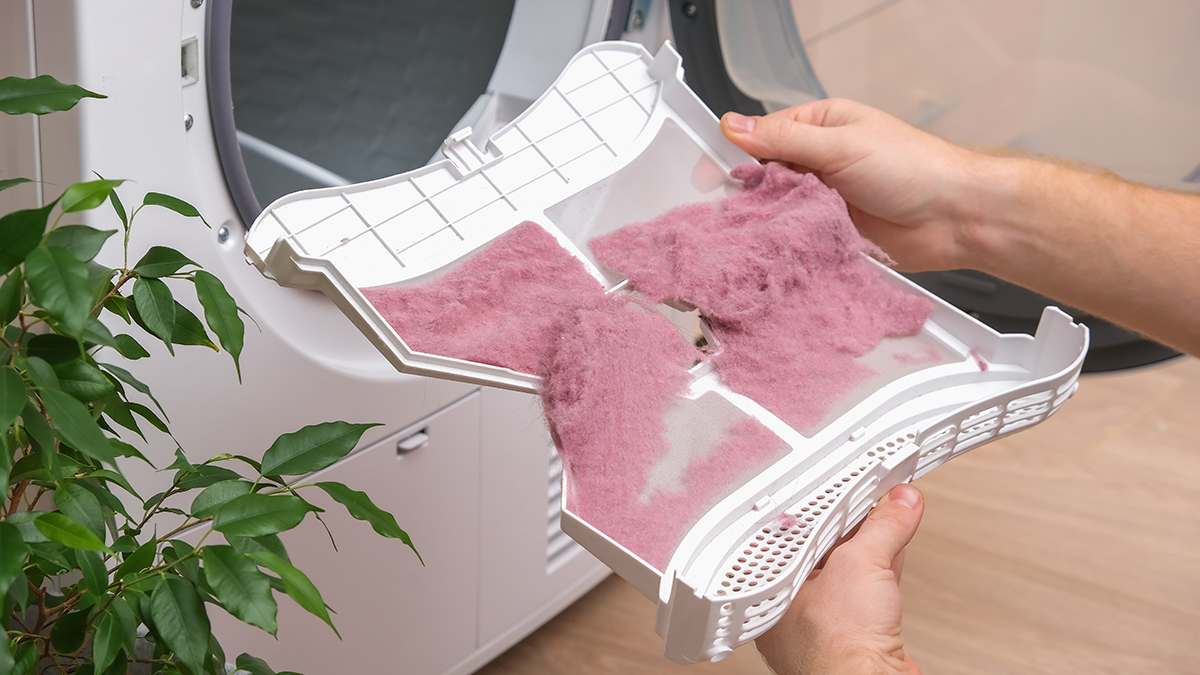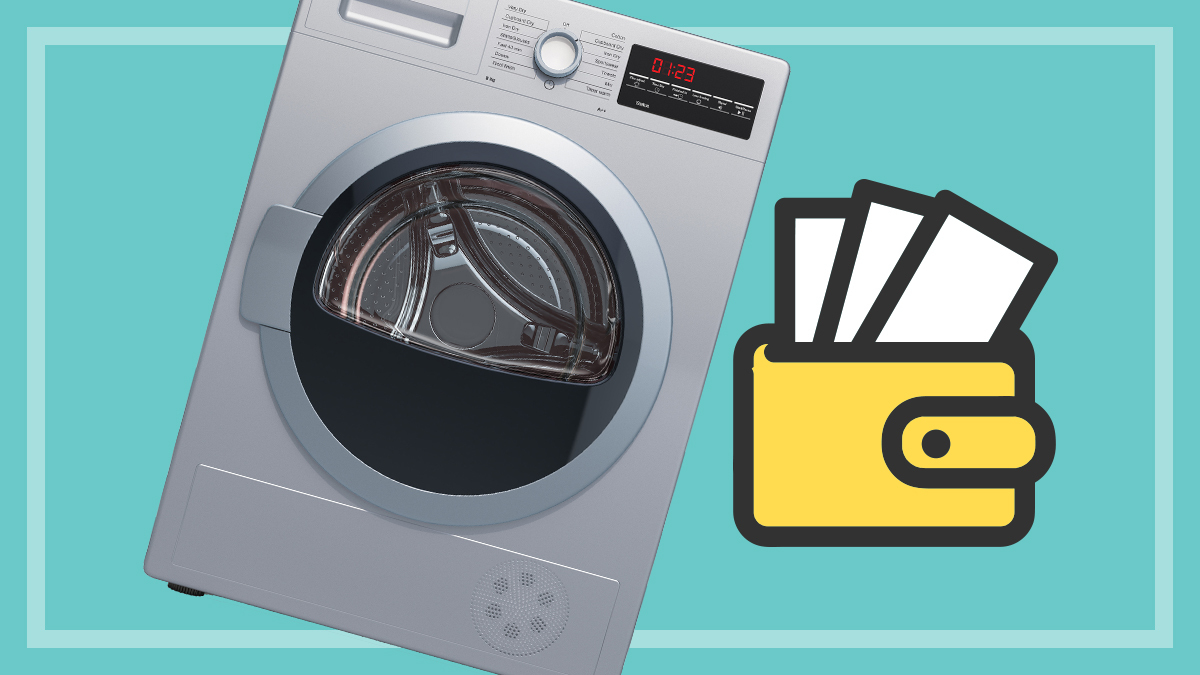Get our independent lab tests, expert reviews and honest advice.
How to buy a great clothes dryer
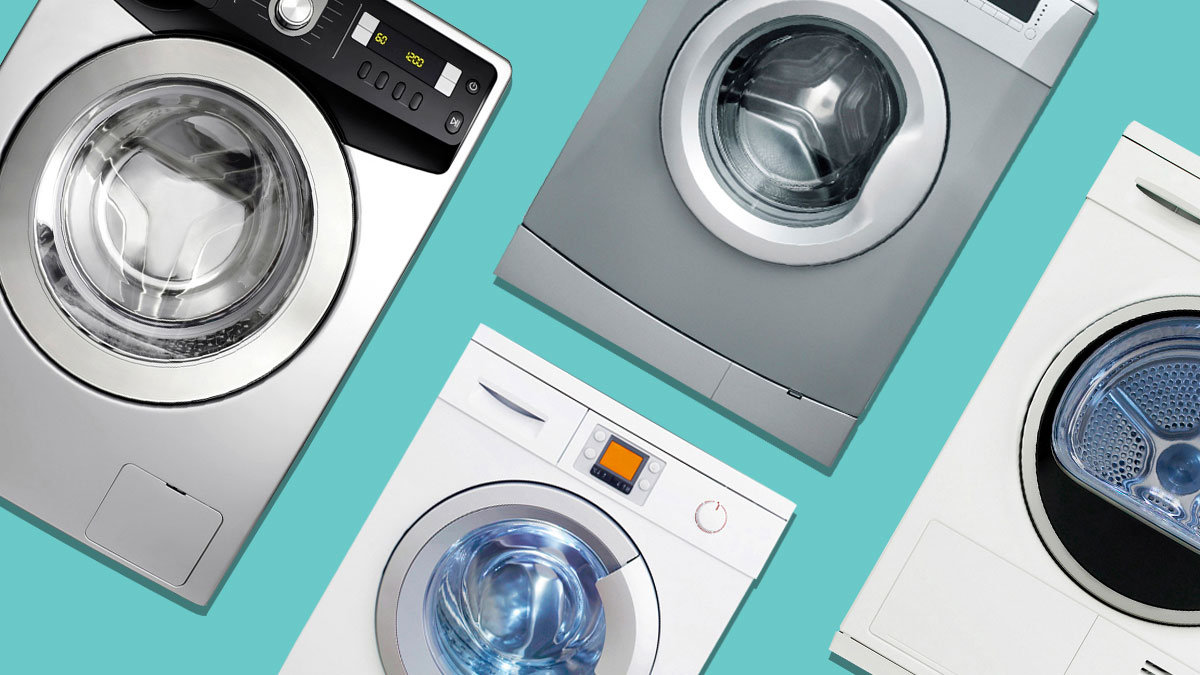
All clothes dryers work by blowing heated air through your clothes to remove moisture, but there are several different types of dryers available which employ different technologies, features and levels of sophistication.
On this page:
- How to decide which clothes dryer is right for you
- Features to look for in a clothes dryer
- How much does it cost to run a clothes dryer?
- 6 money-saving tips for clothes dryers
- Are clothes dryers safe?
- How to care for your clothes dryer
- Do clothes dryers shrink clothes?
- Australia's best clothes dryer brands
How to decide which clothes dryer is right for you
You’ll need to consider:
- how often you’ll be using your clothes dryer
- the kind of items you’ll be using it for
- the available space and ventilation in your laundry
- the impact on your energy costs
- your environmental footprint.
Types of clothes dryers
These are the simplest and most common type of clothes dryer.
Vented dryers are cheap to buy but expensive to run. This sounds like a bad thing, but if you only use your dryer occasionally, it means it’s probably the cheapest option for you when you consider the total cost of ownership (purchase price plus running costs), and the best option if you generally line dry and only want a dryer in case of emergencies.
Of course, if you’re using 100% solar electricity then the higher energy consumption isn’t an issue.
Because they’re so simple (basically a metal box with a drum, fan, heating element and a motor), vented dryers are also relatively light, which means they can be wall mounted to make more efficient use of the space in your laundry.
With any dryer, the moisture from your clothes has to go somewhere. This type of dryer pumps hot, humid air straight out into the surrounds, so you’ll need a laundry with good ventilation (or a venting/ducting kit, which is available for some machines) if you don’t want your home feeling like a sauna.
Vented dryers typically have the shortest cycle times of any dryer type, but they also have the potential to over-dry your laundry, particularly for simple models with no auto sensor, which can damage your clothes.
Pros
- Very cheap to buy
- Simple design is relatively maintenance-free
- Can be wall mounted to save laundry space, and
- Most economical option if you rarely use your dryer.
Cons
- Expensive to run
- Vents hot, wet air into your laundry
- Only suitable for homes with good ventilation, and
- Timer drying risks over-drying, potentially damaging your clothes.
Unlike vented dryers, which push moist hot air straight out of the dryer into your home, condenser dryers use a heat exchanger to condense moisture from the exhaust air and either collect it in a reservoir or drain it away.
The exhaust air from a condenser dryer will still be warm, but won’t be anywhere near as damp, so you won’t have to worry about water dripping down the walls. You’ll need to remember to empty the condenser tank regularly (though you can use it to water your plants) or plumb the machine into a drain.
Condenser dryers are more robust and complex than a vented dryer, which means they’ll typically offer a larger capacity and quieter operation, but it does mean they’re more expensive than an equivalent vented model.
They’re also heavier, which means they’re not suitable for wall mounting, but if you have a front-loading washing machine, you may be able to stack it on top to save space. Not all models will be stackable on all washing machines, so check with your dryer manufacturer first.
Condenser dryers also have longer cycle times than a vented dryer, but they’re typically gentler on your clothes. Best of all, they’re more versatile than a vented dryer because good ventilation isn’t as important.
Pros
- Doesn’t vent hot, wet air into your laundry
- Suitable for houses where running a venting duct is impractical
- Not as expensive as a heat pump dryer
- The water extracted can be used to water plants, and
- Generally larger capacity than a vented dryer.
Cons
- Expensive to run
- Condenser tank must be drained regularly
- More expensive than a vented dryer, and
- Longer drying time than a vented dryer.
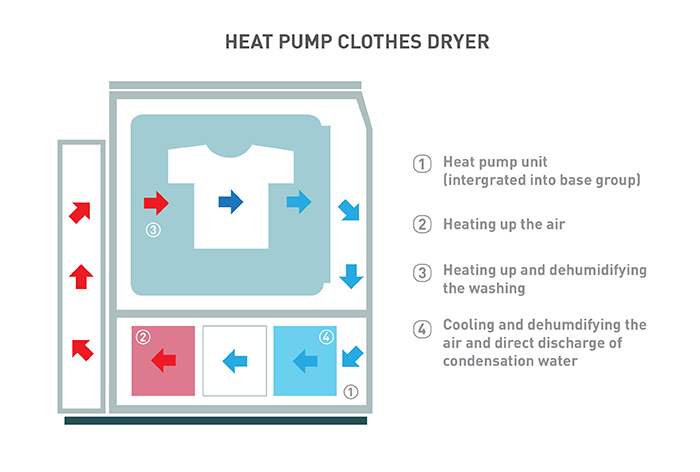
Pros
- Very energy-efficient with low running costs
- Suitable for high volume usage
- Generally offer a good range of programs and large capacity
- Doesn’t require good room ventilation
- Water from your laundry can be used to water plants, and
- Most economical option for heavy dryer users.
Cons
- Very expensive to buy
- Condenser tank must be drained periodically, or plumbed into a drain
- Very complex design may mean higher repair bills if something goes wrong
- Long cycle times
- Can’t be wall mounted, and
- Low running costs won’t outweigh high purchase price for occasional users.
Heat pump condenser dryers use the same heat exchange principles as a reverse-cycle air conditioner to heat the air they use to dry your clothes.
This makes them expensive to buy but cheap to run, because by capturing and reusing their heat energy, they use around 63% less energy than an equivalent-sized vented dryer.
Heat pump condenser dryers take a little longer to dry a typical load of laundry because they use lower temperatures than a vented dryer, but this means they’re gentler on your clothes.
And because they capture and reuse their heat energy, they don’t vent hot air at all, so there’s no moisture fogging up your laundry and hot air. It’s a win-win. Just as with a condenser dryer, you’ll still have to empty the drain tank periodically, or plumb it into a drain.
They’re also really heavy, so you can’t wall mount one, though you may be able to stack a heat pump dryer on top of a front-loading washing machine to save space – ideally one from the same manufacturer, and secured with a stacking kit.
All this complexity comes with a high price tag, so if you only use your dryer occasionally, it may not be worth it. But if you use your dryer a lot, then it’s a sensible financial choice as it’ll save you money overall.
It will still take years for the lower running costs to offset your initial outlay, but with prices of heat pump condensers coming down and energy costs rising, heat pump condenser dryers are becoming a more viable option.
What size dryer do you need?
Will you be putting a full 8kg of washing into your dryer each time? Or just a couple of items?
Most people take the load out of the washer and put it straight in the dryer, which is why it’s a good idea to match the capacity of your dryer to your washer.
But we’ve found most people only wash around 3.5kg of laundry at a time, regardless of the size of their washing machine.
We recommend grabbing your laundry basket full of dry washing and jumping on the scales to see how much you actually wash each time to see what capacity you really need.
If you only want a small dryer, you may be restricted to a vented dryer – the more efficient heat pump dryers are generally all 7kg or greater.
Does capacity refer to the weight of wet or dry clothes?
It refers to dry clothes. So, let’s say you have an 8kg washing machine and fill it to capacity with 8kg of dry clothes. When you take the wet clothes out after the washing cycle, an 8kg capacity dryer is capable of drying that load – even though it’s heavier now it’s wet.
Features to look for in a clothes dryer
Venting/ducting
To prevent dripping walls and mould-ridden ceilings, you need to make sure the moist, hot air from the dryer is removed from your laundry efficiently.
Setting up your dryer near an open window or using an exhaust fan could do the job, but if this isn’t possible then you’re likely to need a venting kit. Some dryers come with one, for others it’s an optional extra.
However, not all venting kits suit all situations. Discuss the installation with the sales staff to make sure you get what you need.
Remember, some dryers only have an exhaust vent at the front and can’t be ducted. So if your laundry has poor ventilation, check that the model is vent-kit compatible before you buy.
Our clothes dryer reviews can tell you which of the dryers we’ve tested are front-vented and whether or not they can be ducted.
Wall-mountable or stackable dryers
Mounting your dryer on the wall or stacking it on top of a front-loading washing machine saves space. But there are a couple things to note.
- Some manufacturers only sell stacking kits as an optional extra, and they may only stack on their own brand of washing machine.
- Only vented dryers can be wall mounted – condenser and heat pump condenser dryers are too heavy and will need to be put on the floor or stacked on top of a washer.
Filters
Your lint filter needs to be cleaned regularly for your dryer to operate efficiently and to reduce the risk of fires, so it’s helpful if the filter is at the front and easy to access.
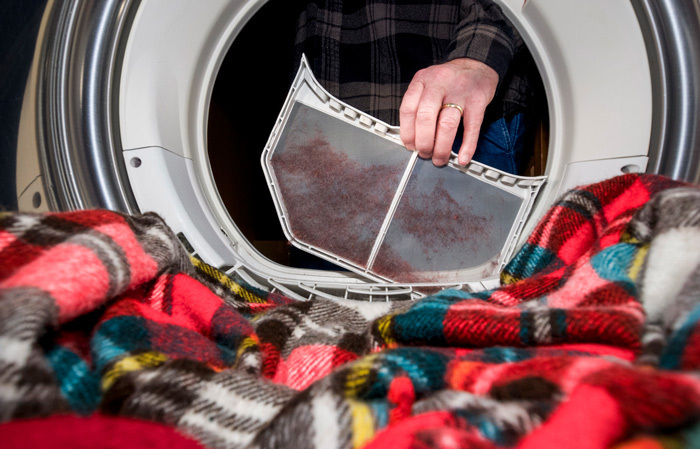
Reverse tumbling
The drum reverses the direction of tumbling at regular intervals for more even drying and to minimise tangling.
Drying rack
Some models come with a rack that can be mounted inside to hold items you don’t want to tumble, such as gym shoes or delicates.
Auto program
This claims to automatically detect when the load has dried. Auto programs can take the guesswork out of clothes drying by switching your dryer off when it’s done, saving energy and preventing the risk of damaging your clothes through over-drying. In practice, they can be a little hit and miss depending on the size of the load you’re drying.
Woollens program
This is a low-heat program designed for drying certain wool or wool-blend items of clothing. Remember though that even with a woollens program, not all woollen garments can be safely dried in the dryer – read the garment care tag carefully and make sure it says that it’s safe to do so.
Delicates program
Like a woollens program, a delicates program is a gentle, low temperature mode for drying delicate fabrics, though just as with wool, read the care instructions on the garment carefully. If it doesn’t say it’s safe to put in a dryer, you should air dry it instead.
Extra dry program
According to the Australian Standard, clothes dryers must be able to achieve a six percent or better moisture content, and if you’re using your dryers’ auto program, it will turn itself off once it reaches this point.
If you’ve used a dryer with an auto function though, you’ll have noticed your clothes still feel a little damp. Why does your dryer stop at this point? For several reasons. It makes your clothes easier to iron, prevents over-drying and damaging delicate fabrics, and improves energy efficiency.
Even if you did get your clothes to zero percent moisture content (bone dry, in technical terms), they would rehydrate by absorbing moisture from the air.
But if you want your clothes extra dry, say, for sealing them up in a bag for winter, an extra dry function can remove a little bit more moisture. It gives you more flexibility, but isn’t necessary for day to day use.
Delay time function
While it’s not a good idea to leave laundry lying around wet for any length of time, there’s a number of reasons why you might not want to start your dryer straight away.
A delay start, or delay time function allows you to set your dryer to start at a specific time, say, when everyone’s gone to bed, to take advantage of peak solar electricity production in the middle of the day, or so the dryer finishes at a convenient time (though of course you should never run a dryer when you’re out of the house due to the risk of fires).
Anti-crease function
When activated, the anti-crease function continues to gently tumble your clothes every so often after drying has finished, so creases don’t settle in so readily.
Child lock controls
A great option if you have small, inquisitive children. Child lock controls prevent the dryer from starting unless a certain button combination is pressed – invaluable if you have curious little ones around with access to your laundry.
Auto-start and child safety
While shutting the dryer door and having it turn on automatically is convenient, the chance of having your small child climb into the dryer and shutting the door behind them is a horrible but very real possibility.
For this reason, we don’t recommend dryers with this function for those with children or regular young visitors.
You can see which dryers have this functionality in our clothes dryer review, under the criteria ‘Unit starts when door shuts’.
How much does it cost to run a clothes dryer?
A vented clothes dryer will be one of the most energy intensive appliances in your home, using anywhere from 2.75–9.25kWh per load.
For example, your energy costs 40 cents/kWh. Say a dryer uses 5kWh per load, and you use it three times a week (or roughly 150 times a year) on average: 0.40 x 5 x 150 = your dryer is going to cost you $300 a year to run.
The good news is, a clothes dryer is one of the easiest to economise on when keeping an eye on the household budget – particularly given Australia’s surfeit of sunlight.
If you’re a heavy dryer user, consider buying a heat pump dryer as their running costs are much lower, but if you only use your dryer occasionally, your heat pump dryer’s lower running costs may never amortise the higher purchase price, so a cheap vented dryer might be a better option.
| Dryer type | Average RRP* | Average 10-year running costs** |
|---|---|---|
| Vented | $523 | $1930 |
| Condenser | $1599 | $1864 |
| Heat pump | $2012 | $759 |
Which is the most energy-efficient type of clothes dryer?
We compare the energy use of a vented, condenser and heat pump dryer.
| Dryer type | Average energy used per load* | Average cycle time* |
|---|---|---|
| Vented | 3.22kW | 203 minutes |
| Condenser | 3.10kW | 176 minutes |
| Heat pump | 1.24kW | 269 minutes |
6 money-saving tips for clothes dryers
- Air dry your clothes wherever possible. Clothes dryers use a lot of energy to run, but sunlight is free.
- Keep your lint filter clean. A blocked lint filter makes it harder for air to circulate through your clothes, making your dryer less efficient and creating a fire hazard. You should clean your dryer’s filter after every load.
- Use the highest spin speed on your washing machine, and if you’re shopping for a new washing machine, look for one with a higher spin speed – this extracts more water, so your washing will take less time and energy to dry.
- Opt for an energy-efficient dryer. If you can’t avoid using your dryer all year round, opt for one with a high energy efficiency score or a heat pump condenser dryer. They cost more to buy but are cheaper to run so they can save you money in the long run. The more you use your dryer, the better an option this becomes.
- Open a window or use your home’s ducting (if it’s available). Venting moisture back into your laundry space just makes your dryer work harder to dry your clothes, costing you more. If you can’t vent, consider a condenser or heat pump condenser dryer – they cost more to buy but are cheaper to run so they can save you money in the long run, and won’t leave you with water dripping from the ceiling and down the walls.
- Be skeptical of dryer balls and other gimmicks. Some people will tell you that adding these to your dryer will reduce the time and energy required to dry your clothes. We tested dryer balls and found the only thing they dried up faster were the liquid assets in your wallet.
Are clothes dryers safe?
All dryers we’ve tested in the last few years have overheat detection, which means they turn off when the temperature gets too hot.
But to make sure you’re extra safe, follow these few steps.
- Follow the instructions in your manual.
- Plug your dryer directly into the power socket, not into a double adaptor, extension cord or power board.
- If wall mounting, make sure your dryer is securely fastened to the wall following the manufacturer’s instructions. Consider professional installation if DIY isn’t your thing.
- Kids love to explore and can easily climb inside your dryer – if you have small children, avoid models which start automatically when the door is closed (see the criteria ‘Unit starts when door shuts’ in the comparison table of our reviews).
- Allow good ventilation around the dryer.
- Don’t load clothes that have had flammable materials spilled on them such as oils. Wash these in hot water with extra laundry detergent before drying.
- Only load clothes, towels and linen.
- Do not put items of clothing with rubber or foam attached to them in the dryer.
- Don’t store flammable items near the dryer.
- Clean your lint filter after every load (it saves time, energy and reduces potential damage to your clothes).
- Follow the clothing recommendations regarding tumble drying.
- Avoid using fabric softeners.
- Don’t leave your dryer on while you aren’t at home.
How to care for your clothes dryer
Your clothes dryer is a pretty hardy appliance. But if you don’t look after it, you could increase your risk of fire, as well as machine failure.
Here’s how to look after your clothes dryer so it gives you many years of safe use.
Every use
- Clean the lint filter – we can’t stress this enough. Not only does a blocked lint filter reduce your dryer’s efficiency, it’s the major cause of dryer fires
- Empty the water tank (condenser and heat pump models), or plumb it into a drain, and
- Leave the door ajar when not in use (if possible) to help extend the life of the seal.
Monthly
Clean external surfaces with a soft damp cloth.
Annually
Vacuum the lint out of air intakes, vents and crevices.
Do clothes dryers shrink clothes?
Yes, clothes shrink, and it’s no stretch of the imagination (ahem) to think that it’s your dryer doing it. Specifically, the combination of heat and tumbling on wet fabrics.
How to stop clothes from shrinking in the dryer
The easiest way to avoid shrinkage is to line dry – it’s good for the environment and it’s free. But we get that’s not always possible.
Known suspects such as woollen jumpers shouldn’t go anywhere near your dryer – air dry them laid flat instead so they’ll retain their shape.
For everything else, read (and follow) the care instructions on the label. It’s pretty simple – if the label says do not tumble dry then don’t tumble dry it. Likewise with anything that says cold wash only.
For a simple vented dryer you should use the warm setting, not hot, and don’t over-dry your clothes.
For more complex dryers with several program options, choose the appropriate program for the fabric you’re drying. You should also separate clothing into types and dry like with like – lighter T-shirts dry faster than heavier towels, so you risk over-drying them.
If you’re a repeat offender, consider shrink-proof clothing – garments which have been ‘pre-shrunk’ during production so tension in the fibres has already been released.
Let’s look at how your clothes are made. The fabric in your clothes is made up of lots of individual fibres, and in their raw state these fibres are relatively short.
In the process of being made into thread, then knitted into a rather fetching autumn turtleneck or woven, dyed and sewn into a garish Hawaiian shirt, they’re stretched out.
When you apply heat and tumbling action in a hot dryer, those fibres want to return to their original, pre-stretched state, leaving your formerly loose shirts and shorts tightly fitted.
Another thing you’ve probably noticed is that not all materials react the same way – natural fibres like cotton and wool are, at a molecular level, hydrophilic.
That means they LOVE water and absorb a lot of it, which makes them more susceptible to shrinkage than synthetics because the water lubricates the fibres, allowing them to contract and move more easily.
Synthetics like polyester and nylon are less susceptible to dryer-related shrinkage, and tightly woven fabrics like denim will also fare better than loose knits. Sadly, that means your rayon Hawaiian shirt is virtually indestructible.

Australia’s best clothes dryer brands
You may not use it every day, but on a wet weekend a dryer can be a real laundry lifesaver. We’ve tested more than 45 different dryers over the past four years in our labs, covering much of the $190 million annual market in Australia.
Whether you’re in the market for a vented, condenser or high-end heat pump dryer, through our extensive testing we’ve found which ones give consistently good results – and which ones are a bit hit and miss. We also look at feedback from our members on satisfaction and reliability.
Best clothes dryer brand for 2025: LG
This year, LG takes out the title for CHOICE’s Best Brand for clothes dryers, achieving an impressive average test score of 87% in our reviews along with higher than average scores for reliability and satisfaction when we surveyed our members who own LG dryers.
Among the models tested, both Electrolux and Westinghouse delivered models that scored high enough to be recommended. Although their overall test performance wasn’t as good as LG, they did perform well in our latest survey. However, we weren’t able to test enough models for the brands to be considered.
Other brands that performed well in our testing but either didn’t have enough models tested to be considered, or not enough reader responses in our most recent survey, include Miele and Samsung.
This means it’s worth looking at various brands in your research, and don’t assume that one brand’s products are the best across the many different features, functions and price points. The performance of specific product models from the same brand can vary quite significantly. The best way to find a top-scoring model that meets your needs? Look for the blue ‘Recommended’ label in our clothes dryer reviews.
The Best Brand Dryer is based on our test results for dryers over the past four years, as well as customer satisfaction and reliability information submitted by CHOICE members on their experience with the brand.
The recommendation is given to companies with a clear lead over their competitors during the test period, and no more than two recommendations are given during each period.
Best Brand eligibility is tough – to be considered, we must have tested a minimum of five models, and a brand must have received a minimum of 50 responses to the CHOICE member survey. Additionally, brands must score a minimum of 60% and be above the average score for average test score, reliability and satisfaction for consideration.
The following criteria determines the Best Brand recommendation.
- Average test score – 40%
- Brand reliability – 30%
- Customer satisfaction – 20%
- Recommended ratio – 10%
Average test score
This measures the average score for all models tested over the past four years in the CHOICE labs for each brand. Our testers assess how long it takes to dry your clothes and, because clothes dryers are energy intensive appliances, they also assess the energy consumption, which is an important consideration in the laundry – particularly if you’re going to rely heavily on your dryer.
For more details, see how we test clothes dryers.
Brand reliability
Our customer insights team grilled 3270 members who own clothes dryers in the CHOICE Product Reliability Survey about whether they’ve run into any problems with their dryer in the previous 12 months.
Customer satisfaction
Our survey also asks how satisfied members are with their dryer. So, even if a dryer has a fault after six months, it’s still possible for it to have a high satisfaction score – perhaps the company has customer service that goes beyond expectations, or the product is simply too good, despite some performance quirks.
Recommended ratio
In order to be recommended, a heat pump dryer must earn a test score of at least 75%, at least 80% efficiency score, and at least 70% drying time score, while condenser and vented dryers must earn a test score of at least 70%, at least 65% efficiency score, and at least 80% drying time score.
We then calculate the percentage of dryers that CHOICE recommends for each brand. The greater the number of models that earn a recommendation in relation to the number of models tested, the higher the recommended ratio score.
There was no Best Brand for clothes dryers in 2024 as none of the brands met our strict criteria.

